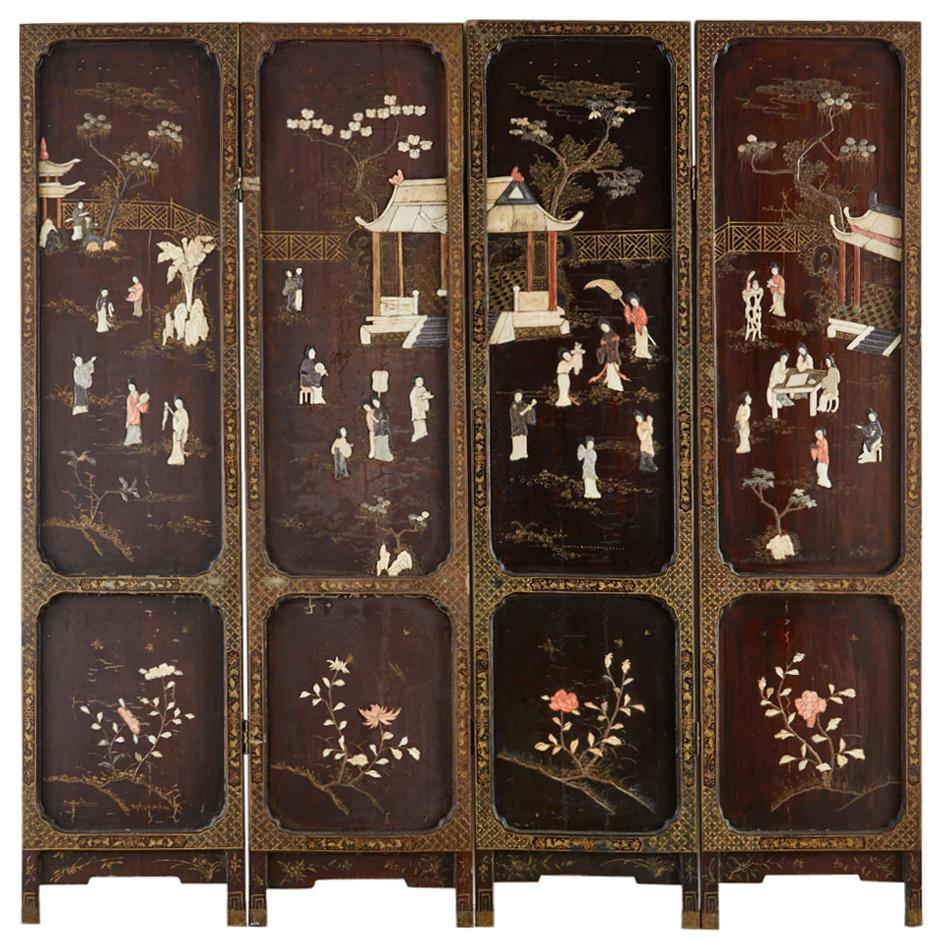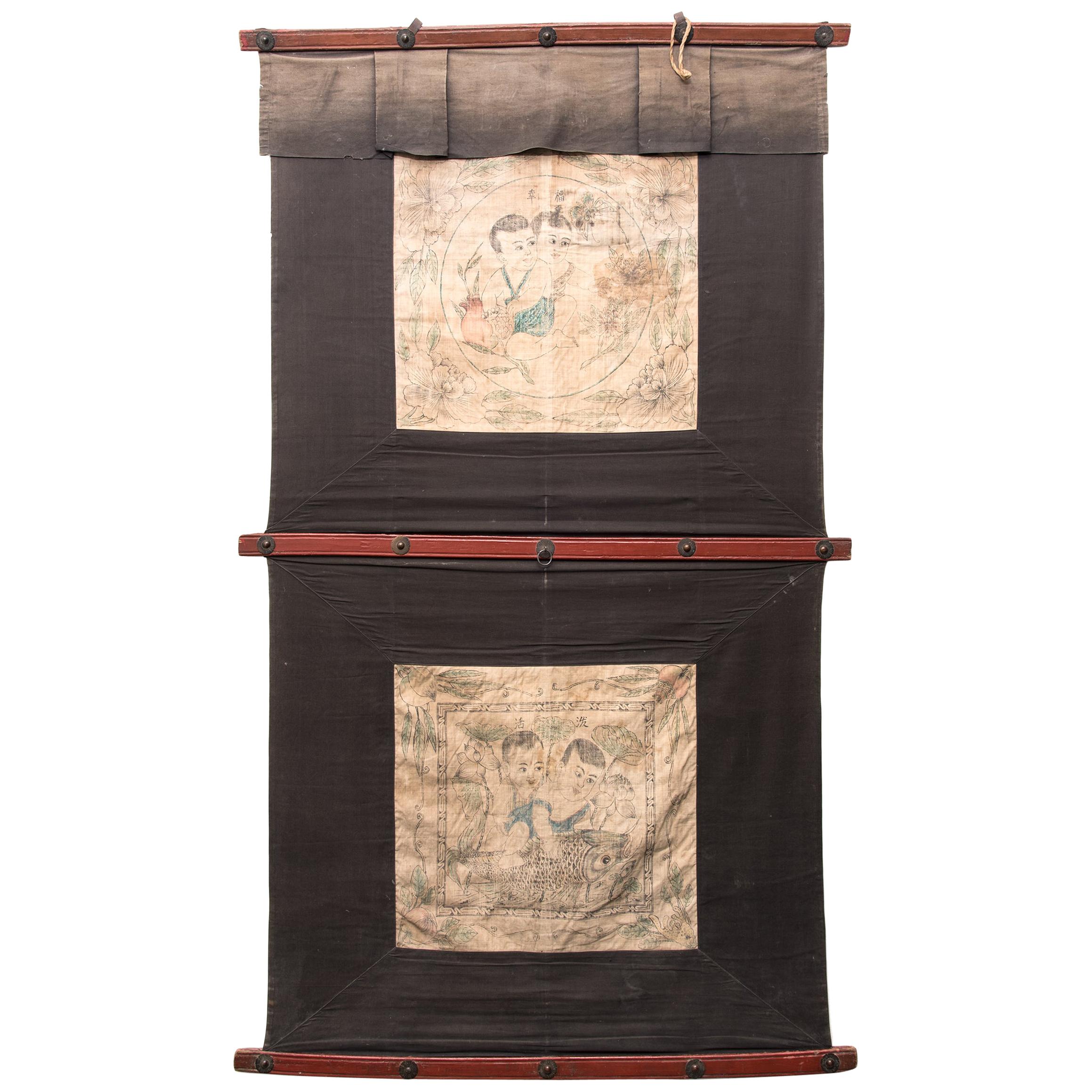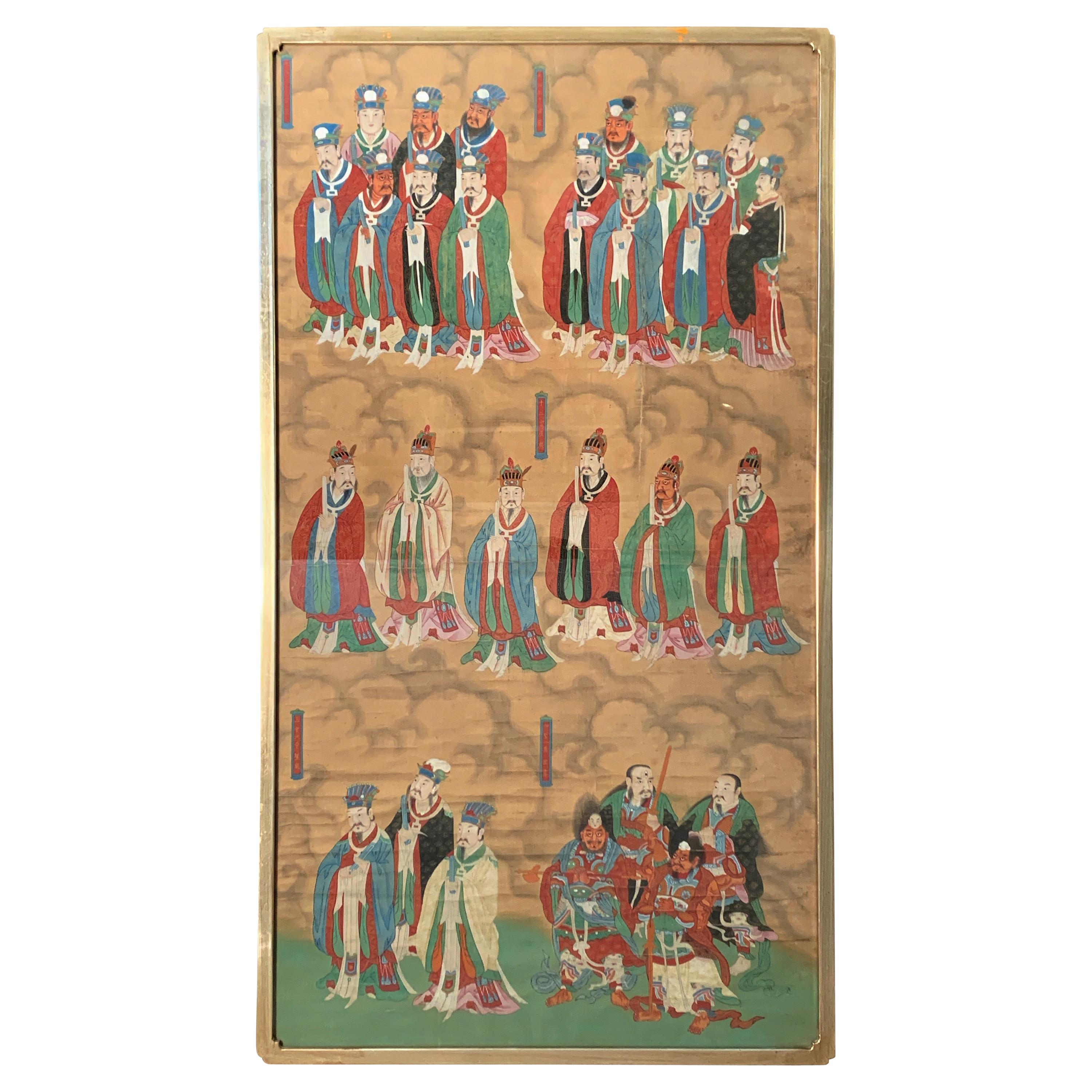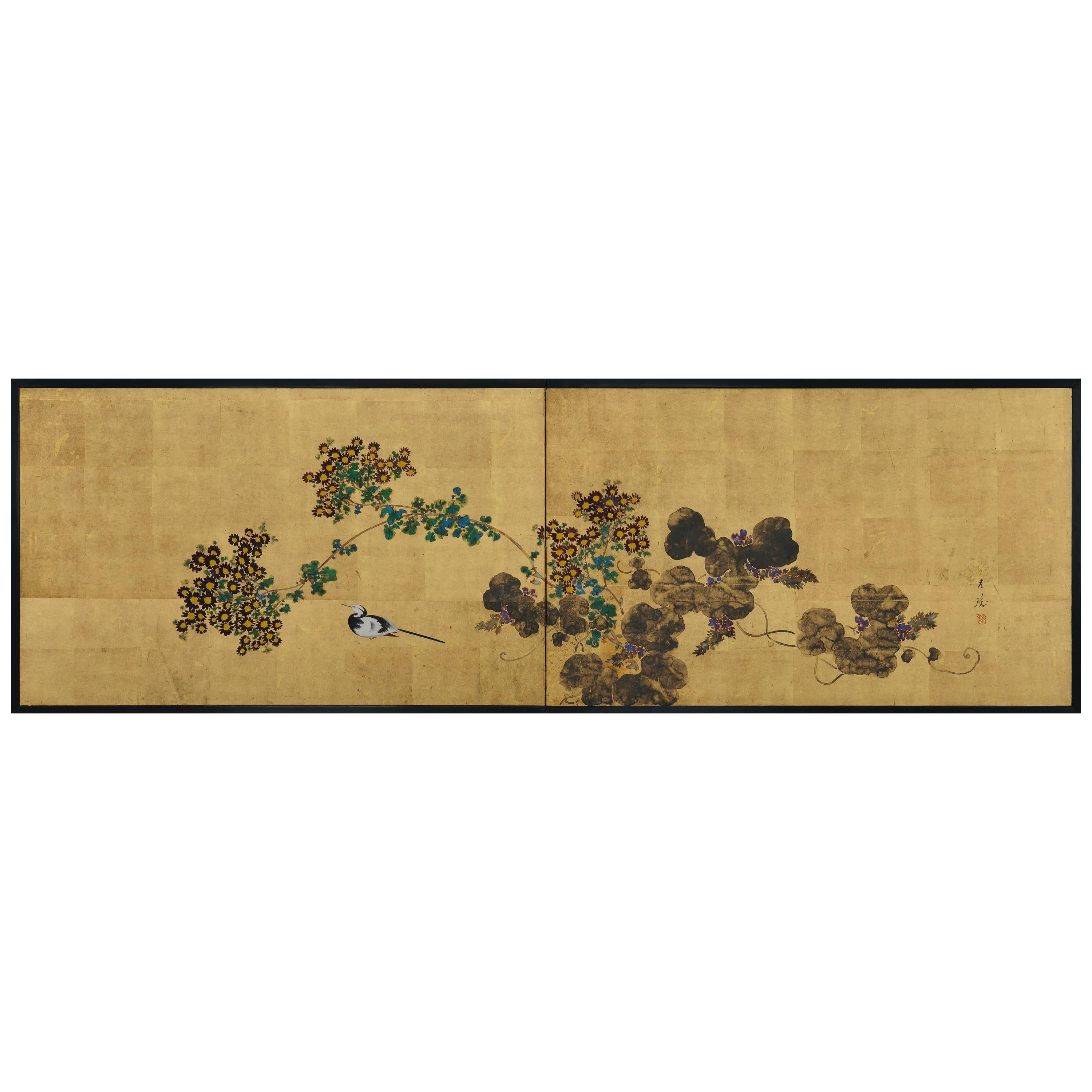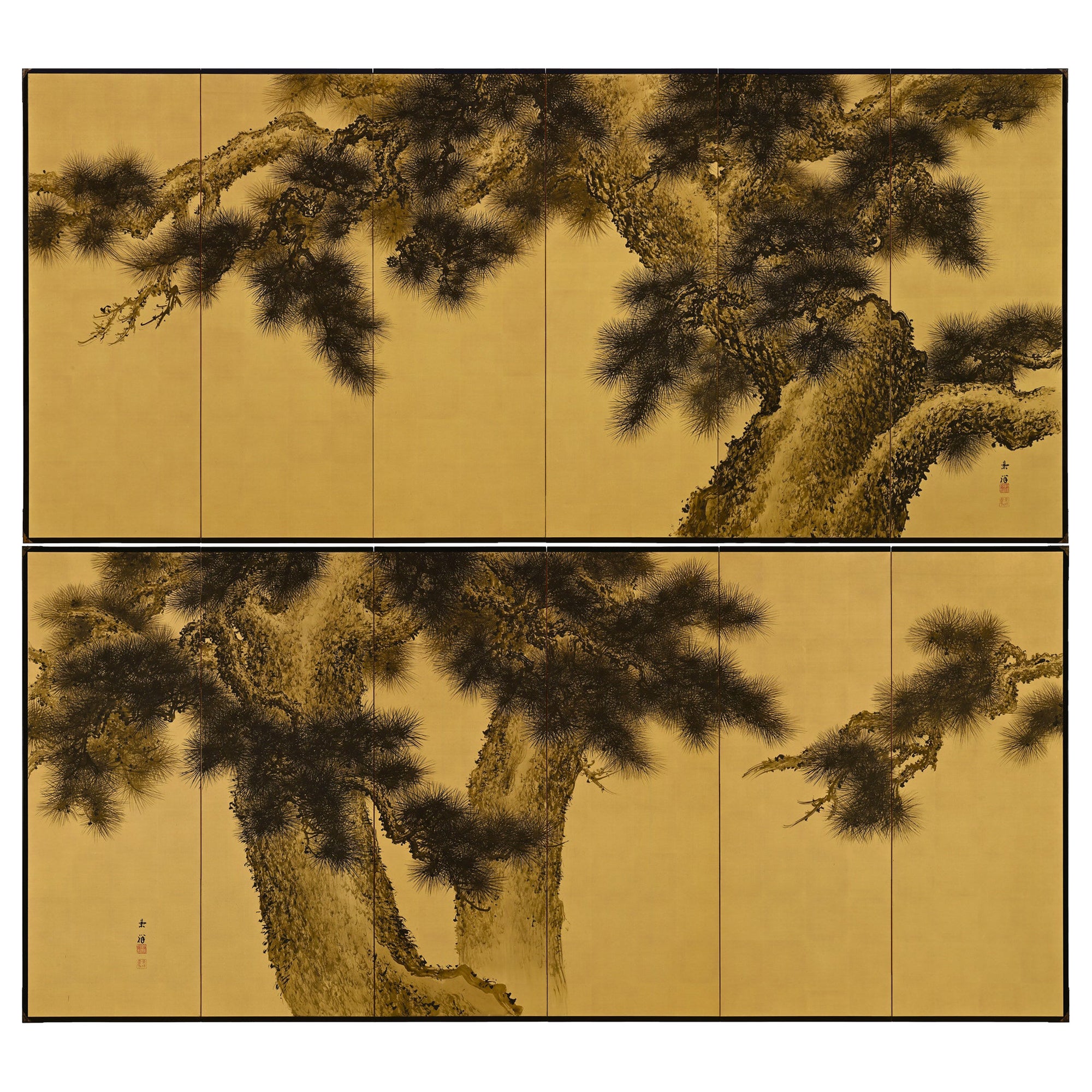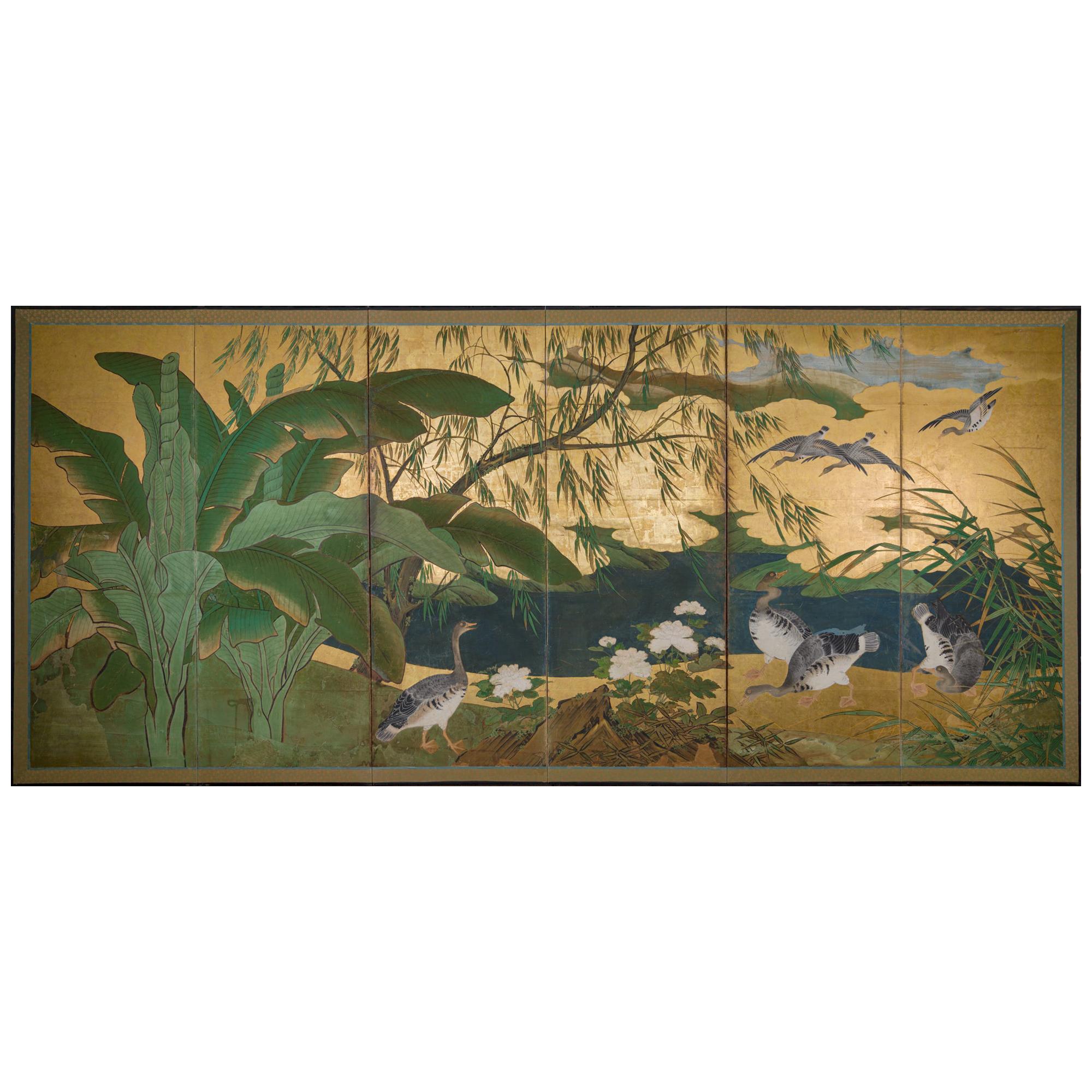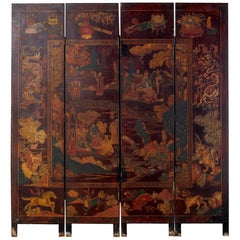
Early 20th Century Chinese Qing Four-Panel Coromandel Screen
View Similar Items
Want more images or videos?
Request additional images or videos from the seller
1 of 18
Early 20th Century Chinese Qing Four-Panel Coromandel Screen
About the Item
- Dimensions:Height: 53.75 in (136.53 cm)Width: 50 in (127 cm)Depth: 0.5 in (1.27 cm)
- Style:Qing (Of the Period)
- Materials and Techniques:Wood,Lacquered
- Place of Origin:
- Period:
- Date of Manufacture:Early 20th Century
- Condition:Wear consistent with age and use. Aged, distressed and faded patina with losses as seen in photos. Age appropriate wear.
- Seller Location:Rio Vista, CA
- Reference Number:1stDibs: LU1555221714562

About the Seller
5.0
Erin Lane Estate is based in the San Francisco Bay Area, and its team of furniture restorers, art curators, professional appraisers and Asia specialists sources prime vintage and antique furniture from the finest estates in Northern and Southern California. Erin Lane Estate specializes in Hollywood Regency, McGuire, Chinese and Japanese pieces.
Diamond Seller
These expertly vetted sellers are 1stDibs' most experienced sellers and are rated highest by our customers.
Established in 2000
1stDibs seller since 2015
2,656 sales on 1stDibs
Typical response time: 1 hour
More From This SellerView All
- Chinese Qing Four Panel Carved Soapstone Coromandel ScreenLocated in Rio Vista, CAImpressive Chinese late Qing dynasty four panel folding coromandel screen featuring carved soapstone. The lacquered panels are decorated with idyllic scenes of beauties in a pagoda p...Category
20th Century Chinese Chinese Export Paintings and Screens
MaterialsSoapstone, Brass
- Chinese Qing Four Panel Lacquered Incised Coromandel ScreenLocated in Rio Vista, CARare unusual late 19th century/early 20th-century Chinese Qing four-panel coromandel screen. The front features dark red lacquer decorated with scholars objects and small landscape s...Category
Antique 19th Century Chinese Qing Paintings and Screens
MaterialsBrass
- Chinese Qing Four Panel Carved Soapstone Coromandel ScreenLocated in Rio Vista, CAImpressive Chinese export late Qing dynasty four-panel folding Coromandel screen featuring carved soapstone. The ebony lacquered panels are decorated with colorful carved scholars ob...Category
20th Century Chinese Chinese Export Paintings and Screens
MaterialsSoapstone, Brass
- Chinese Qing Twelve Panel Lacquered Coromandel ScreenLocated in Rio Vista, CAEarly 20th century Chinese late Qing dynasty twelve panel lacquered coromandel screen. The grand screen features a royal pavilion courtyard...Category
20th Century Chinese Qing Paintings and Screens
MaterialsBrass
- 20th Century Chinese Export Six Panel Gold Leaf Coromandel ScreenLocated in Rio Vista, CALate Qing, early republic period style Chinese export six-panel coromandel screen featuring a pavillion with figures engaged in leisurely activities on a dramatic gilt gold leaf back...Category
20th Century Chinese Chinese Export Paintings and Screens
MaterialsBrass, Gold Leaf
- 20th Century Chinese Gilt Coromandel Eight-Panel Screen Immortals Sky GodsLocated in Rio Vista, CAAmazing Chinese export eight-panel lacquered coromandel screen depicting a heavenly scene of immortals and sky gods floating in ruyi clouds. The fascin...Category
20th Century Chinese Chinese Export Paintings and Screens
MaterialsBrass, Gold Leaf
$9,750 Sale Price35% Off
You May Also Like
- Chinese Reverse Glass Painting of Woman, Early 20th CenturyLocated in Jimbaran, BaliThis Chinese portrait depicts a young woman and was painted using a reverse glass painting technique. Painting in reverse on the opposite side of a piece of glass meant the painter h...Category
Early 20th Century Chinese Qing Paintings and Screens
MaterialsGlass, Wood, Paint
- 'Love and Lotus Boys' Early 20th Century Chinese Folk PaintingLocated in Chicago, ILDrawn with a fine line and fresh, sketched quality, this folk hanging unites two scenes of lucky hoho lotus boys circumscribed in frames punctuated with fruits such as pomegranate, symbolic of prosperity and good fortune. On top, the two explore the natural wonders of the world...Category
Early 20th Century Chinese Qing Paintings and Screens
MaterialsLinen, Wood
- Chinese Early Qing Dynasty "Water and Land Ritual" Painting, 17th CenturyLocated in Austin, TXAn important Chinese 17th century early Qing Dynasty "Water and Land Ritual" painting, mineral pigment and ink on silk, mounted as a scroll, framed and glazed. The painting depicting groups of heavenly court officials and deities descending from the clouds to participate in the Liberation Rite of Land and Water. The figures all wear full, sumptuous robes, complete with hats indicating their station. The blue, green, red, black and white of the robes decorated with gilt dragon and geometric designs. This painting is interesting in that it incorporates Daosit deities and heavenly officials coming down to participate in the Buddhist rite. There are five distinct groups of figures, each with a small inscribed plaque. Some of the groups are identified as Tian Xian, or Heavenly Immortals. The group at the bottom left are identified as the Sanguan Dadi, or Three Great Emperor-Officials. The Emperor of Heaven is dressed in blue robes with gilt painted dragons. The Emperor of Water wears black robes. The Emperor of Earth wears yellow robes...Category
Antique 17th Century Chinese Qing Paintings and Screens
MaterialsSilk, Glass, Giltwood, Paint
- Japanese Four Panel Screen: Early Spring Into SummerLocated in Hudson, NYJapanese Four Panel Screen: Early Spring Into Summer, Meiji period (1868 -1912) painting of plum in bloom with red camellias on the right and peony and thistle on the left. A clutc...Category
Antique Early 1900s Japanese Meiji Paintings and Screens
MaterialsGold Leaf
- Early 20th Century Japanese Cherry Blossom Screen by Kano SanrakukiLocated in Kyoto, JPCherry Blossoms Kano Sanrakuki (1898-1981) Showa period, circa 1930 2-panel Japanese Screen Color, gofun and gold leaf on paper Against a backdrop of gold-leafed ground, the lichen covered trunk and branches of the life-sized cherry blossom tree reach out and beyond the confines of the pictorial surface. The overall composition has a feeling of flatness which draws emphasis to the surface and the three-dimensionality of the cherry blossoms. Painstakingly built-up layers of thickly applied shell-white gofun detail the voluminous blossoms and cover large areas of this tour-de-force of Japanese Nihonga painting. By simplifying the background, minimizing the number of colors and depicting the blossoms with such heavy relief, the artist has emphasized the stunning presence of the cherry tree. The type of tree depicted is the Yae-Zakura; a double-layered type of cherry blossom famed for its beauty and strength. When we think of Japanese cherry blossoms, the first thing that comes to mind is Somei Yoshino variety, which has a single flower with five almost white petals. This type is fragile and easily blown away by strong wind or rain. Most of the double-flowered cherry blossoms begin to bloom when the Somei-Yoshino falls, and the flowering period lasts longer than that of the Somei-Yoshino. Kano Sanrakuki originally studied painting at the Kyoto City Arts and Crafts School under the tutelage of Yamamoto Shunkyo...Category
Early 20th Century Japanese Showa Paintings and Screens
MaterialsGold Leaf
- Japanese Screen, Early 20th Century Wagtail & Chrysanthemum by Ishizaki KoyoLocated in Kyoto, JPIshizaki Koyo (1884-1947) Wagtail & Chrysanthemum Early 20th century Folding screen in two-panels. Ink, pigments and gofun on gold leaf. Sign: Koyo Seal: Koyo This ...Category
Early 20th Century Japanese Taisho Paintings and Screens
MaterialsGold Leaf
